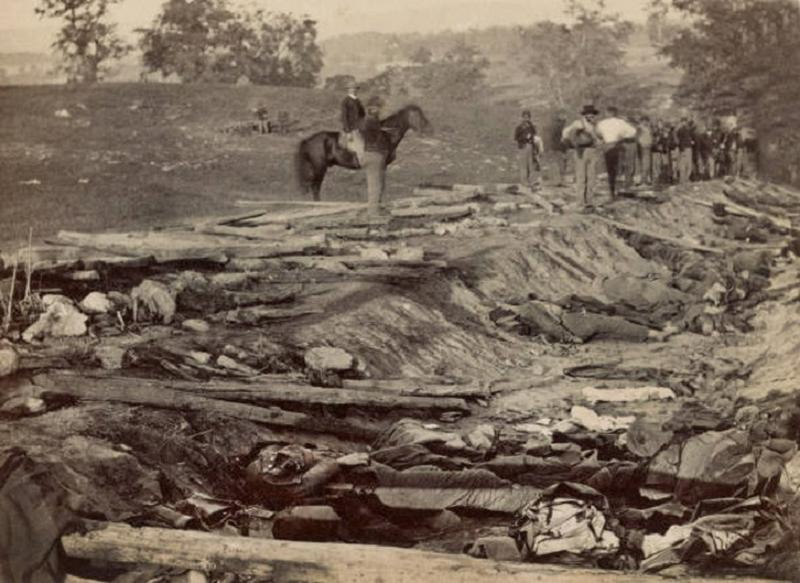The Photos That Introduced Civilians To The Brutality Of War
By | December 27, 2022

The first photographic process, the daguerreotype, was invented in Europe by Louis Daguerre and was presented to the public in 1839; after this, it was brought to America by Samuel Morse, the inventor of the telegraph. It was one of Morse’s students, Matthew Brady, who became the best-known photographer of the time, becoming as famous as the subjects he photographed, and opened a studio in New York in 1844. By 1856, the next advancement in photography, glass plate photography, made it to the U.S. One of Brady’s assistants, Alexander Gardner, was probably the individual who was able to use the new technology most efficiently and effectively.
Brady Sent Assistants
Gardner, who was an immigrant from Scotland, was so successful that Brady sent him to manage his new studio in Washington D.C., and, when the Civil War began, Brady sent 20 assistants, including Gardner and the talented Timothy O’Sullivan to photograph it. They captured images from the start of the war with the April 1861 bombardment of Fort Sumter, taking around 10,000 pictures by the time the war had ended. Throughout the war, Brady and his assistants followed the Union Army, although Brady himself did not take all of the images that were credited to him. Gardner, O’Sullivan, and Brady’s other assistants were all working for Brady but they did not receive credit.

They Didn't Photograph Battles
They followed the Union Army, they captured every aspect of life except for the battles because photography at the time only allowed for still images. They also did not capture images of the dead, that is, until Antietam. Because of the Union losses in the early stages of the war, Brady and his photographers were unable to go onto the battlefield that still had bodies of the dead. In July 1861, Brady tried to follow the Union Army into Virginia, but when the Union army was driven from the field in the First Battle of Bull Run, he had to flee and was unable to take any battlefield photos. James Gibson, a Brady photographer, photographed the wounded Union soldiers on the ground of a makeshift hospital in June 1862 during the Peninsula Campaign. Another Brady photographer, Timothy O'Sullivan, photographed horses killed during the Battle of Cedar Mountain, Virginia.
Gardner Photographed Antietam
On September 17, 1862, the Battle of Antietam was fought in the fields and woods near Sharpsburg, Maryland. During this battle, the bloodiest in the Civil War, more than 22,700 soldiers were killed, wounded, missing, or captured. To document the battle, Alexander Gardner traveled to Antietam twice; the first time was two days after the battle, while the second was when President Lincoln visited the battlefield, two weeks later. During these two visits, Gardner took approximately 90 pictures at Antietam; of these, 70 used the new photographic technique, the stereograph. The stereograph used two lenses to take simultaneous pictures. When looked at through a viewer, the mind created a three-dimensional image.

The Significance Of The Antietam Pictures
When Gardner arrived in Antietam, he did what no one else in the history of warfare had done: he took pictures of the aftermath of the battle, specifically of the bodies of those who had died, lying on the battlefield.
The Exhibition
These photos brought the realities of the war to people when they were exhibited at Brady’s Broadway gallery in New York City in October 1862. The New York Times reported on October 20 that large crowds visited Brady’s exhibition, called “The Dead of Antietam.” They were drawn by “terrible fascination” as they went to see images of the dead who had fallen in combat on the battlefield. As the Times reported, while Brady had not “brought bodies and laid them in our dooryards and along the streets, he has done something very like it.” In its October 18, 1862 issue, Harper’s Weekly brought the images to the rest of the nation, as they devoted their center spread to woodcut engravings of eight images (at the time, the technology did not exist to reproduce photographs). Six of these were the images of the dead.
Gardner Opened His Own Studio
After his photos were featured at Brady’s gallery, Gardner broke from Brady, opening his own studio in May 1863.